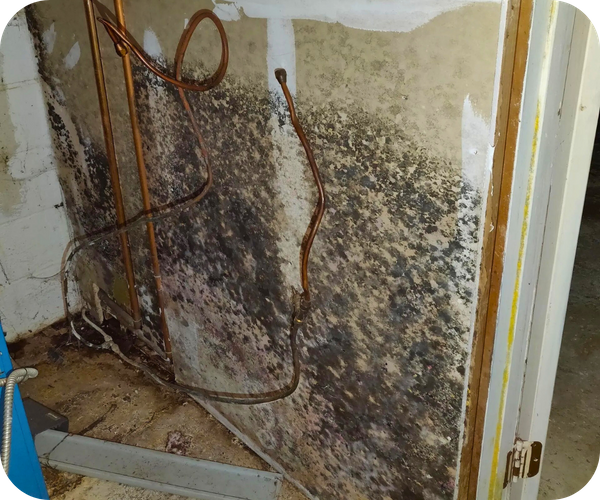Mold Inspections
Expert Mold Inspection and Testing in Westchester County, NY & Fairfield, CT
The presence of mold negatively impacts indoor air quality and poses serious health hazards, from allergic reactions to skin irritation. A professional home mold inspection is the first step to identifying existing mold and the moisture conditions that cause it to grow. Sonic Home Inspections provides expert mold inspection and testing in Westchester County, Putnam County, Dutchess County, and Fairfield County. We leverage state-of-the-art technology, including an air quality mold test when necessary, to restore your peace of mind and help you make an informed decision about your property.
Our Comprehensive Mold Assessment Process
Choosing the right mold testing services is key to resolving the issue permanently. Every certified mold inspector on our team does more than just find visible mold; we identify the source of the moisture that allows it to grow. Our mold assessment services include a thorough visual inspection of the property, moisture meter readings, and thermal imaging to uncover hidden water intrusion. After the inspection, we provide a detailed, easy-to-understand report outlining our findings, the extent of any contamination, and clear recommendations for remediation, ensuring you have a complete picture of your home's condition.
Our Mold Inspection Process
Initial Consultation and Assessment
The first step of any mold inspection is to set up an initial consultation with the homeowner, property manager, or tenant to discuss their concerns. Our inspectors will ask various questions to narrow down their inspection area and scope. Ensure to answer all the questions honestly and accurately for better diagnosis.
Visual Inspection
In the next step, our inspectors conduct a comprehensive visual inspection. They carefully examine areas, including walls, ceilings, and other structural home elements, identified as potential mold growth sources. Our technicians also look for water stains, musty odor, or condensation on pipes for visible mold growth.
Moisture and Mold Sampling
After visual inspection, our inspectors take samples from various surfaces and air within the property. It involves tape-lifting and swabbing where mold is suspected. Mold sampling is useful in determining overall air quality in a space where mold spores are present.
Laboratory Analysis
After collecting samples from the home, we sent them to a laboratory for analysis. Professionals use specialized testing methods to detect mold types. Lab analysis provides precise information and can be used to identify mold growth extent and source. We only give samples to reputed and accredited labs for reliable results.
Reporting and Recommendations
In the end, once the analysis is complete, we offer our clients a detailed report about any mold growth detected in the home or potential mold problems. If necessary, we also provide recommendations for mold remediation to help homeowners enjoy a safe and healthy home.

Protect Your Home and Health Today
Don't let hidden mold compromise your property or your family's health. If you suspect a mold issue, contact our team today to schedule a comprehensive inspection with our certified professionals.
